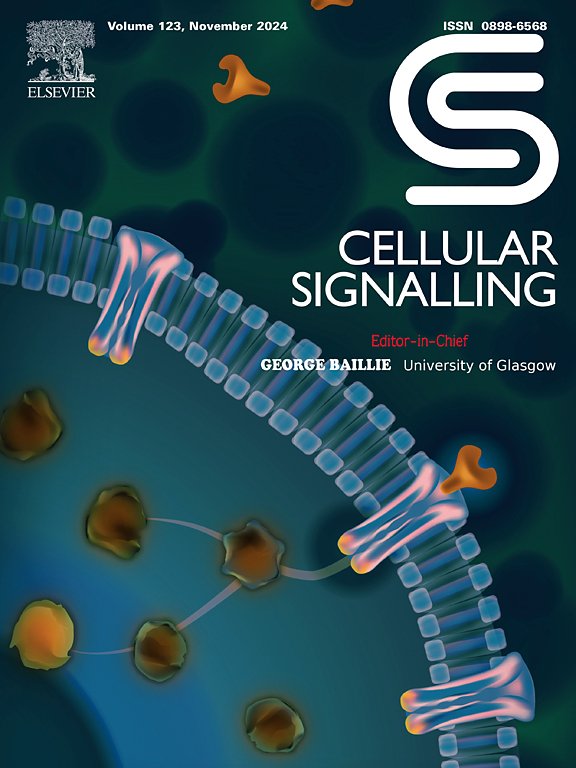Identification of a regulatory sequence within the third intracellular loop that governs β-arrestin binding to the muscarinic M5 receptor
IF 3.7
2区 生物学
Q2 CELL BIOLOGY
引用次数: 0
Abstract
The M5 muscarinic acetylcholine receptor (M5R) is selectively expressed in dopaminergic neurons and although accounts for <2 % of the total muscarinic receptor population, plays critical roles in many physiological and pathophysiological processes. Despite its undoubted importance, the M5R remains greatly understudied. This study aimed to elucidate the regulatory mechanisms underlying M5R signaling, particularly in relation to G-protein-coupled receptor kinases (GRKs), β-arrestin recruitment, and internalization. Utilizing a combination of BRET based assays, flow cytometry and biochemical techniques we demonstrate that, following ligand binding and G-protein signaling, M5R undergoes GRK2/3-mediated, β-arrestin1/2 recruitment followed by β-arrestin1/2 and clathrin-dependent internalization. We used a series of deletion mutants to identify two key regions within the third intracellular loop critical for increasing and decreasing β-arrestin recruitment, respectively. Notably, we identified amino acids 303–345 as crucial for recruitment of β-arrestins, the deletion of which results in a G-protein-biased M5R ∆1–2. Using this receptor mutant in conjunction with β-arrestin1/2 CRISPR/Cas9 edited cells, we show M5R activation of extracellular signal-regulated kinase (ERK1/2) phosphorylation and whole-cell responses require G-protein-dependent initiation, however, phosphorylation and β-arrestin contribute to the spatial regulation of signaling.
鉴定控制β-抑制蛋白与毒蕈碱M5受体结合的第三胞内环内调控序列。
M5毒蕈碱乙酰胆碱受体(M5R)在多巴胺能神经元中选择性表达
本文章由计算机程序翻译,如有差异,请以英文原文为准。
求助全文
约1分钟内获得全文
求助全文
来源期刊

Cellular signalling
生物-细胞生物学
CiteScore
8.40
自引率
0.00%
发文量
250
审稿时长
27 days
期刊介绍:
Cellular Signalling publishes original research describing fundamental and clinical findings on the mechanisms, actions and structural components of cellular signalling systems in vitro and in vivo.
Cellular Signalling aims at full length research papers defining signalling systems ranging from microorganisms to cells, tissues and higher organisms.
 求助内容:
求助内容: 应助结果提醒方式:
应助结果提醒方式:


